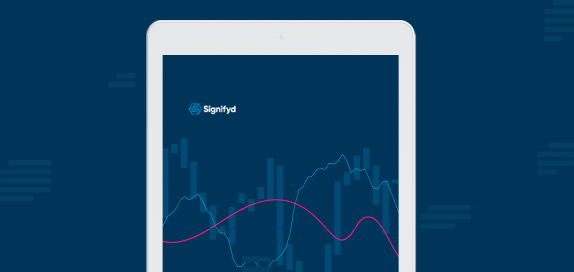Steve Dennis wrote in Forbes that this might be the most important week in retail that nobody really talks about.
The holiday season can be a little like frolicking in the ocean without the warm beach and sunshine. There is barely time to catch your breath from the last huge wave that knocked you into the next county before another just like it comes along.
So, here we are the week after Christmas, celebrating a stellar season that saw year-over-year sales rise nearly 5 percent, according to MasterCard. But there is no time for high-fiving. It’s time to brace amid the rush of gift-card recipients and what’s expected to be a volume of returns that will have sales floors and websites looking like the holiday rush in reverse.
Dennis, a retail strategist and former Neiman Marcus executive, laid out the picture in his piece, which borrowed the phrase X13 (as in 13th month) to describe the week: “For many retailers, X13 will be the second-busiest week of the entire year, both online and offline, so a lot is at stake.”
He cited a Sensormatic estimate that the day after Christmas would be the fourth busiest shopping day of 2017. Plenty of factors come together to make the week between Christmas and New Year’s Day such a shopping bonanza: Many are off work; it’s a week of big discounts; those who didn’t get what they wanted for Christmas take matters into their own hands.
More ecommerce means more post-holiday returns
But one of the most consequential reasons, as far as retailers are concerned, is that the week is prime time to return gifts that didn’t hit the right note. As more commerce has moved online (18.1 percent of holiday sales this year, according to MasterCard), returns have become an even bigger pain point for retailers.
Some categories, such as apparel, typically see 30 percent of online sales returned due to the fact that customers don’t have a chance to see, feel and try items on.
The numbers tell the story. Nearly half the U.S. population will attempt to return at last one gift this week, return-management company Optoro tells the New York Times. CNN reports that Optoro says items worth about $90 billion will be returned during the holiday period. As much as five billion pounds of products will end up on the garbage heap because it would cost more to restock them than they are worth. Other items will be sold at a deep discount to liquidators who specialize in selling returned items.
For its part, package-delivery service UPS has become a package un-delivery service, “having handled more than 1 million returns to retailers daily in December,” Reuters reports.
But we are not here to simply curse the darkness. Instead, we thought we’d reconstitute and revive a series of tips we’ve gathered to help retailers put a positive spin on returns. (And to demonstrate an extra bit of compassion we will refrain from any “many happy returns” puns.)
Be proactive
Trouble can start with product descriptions. Make sure it’s easy for consumers to understand what they’re getting. Provide style and fit guides that will make size selection easy. Be creative. High-end luggage retailer Tumi told the Wall Street Journal that this year it instituted a “smart gift” option. A gift giver can send an alert to the receiver via email. The option allows the receiver to note preferences in terms of color, for instance, before the gift is delivered.
Be deliberate
Returns are not an afterthought for your customers and they shouldn’t be an afterthought for you. Guillaume Racine, of Return Magic suggests that retailers be bold when it comes to returns. Advertise your return policy prominently on your website and mobile sites. If you don’t want to offer free returns, advertise “easy returns” and stick with the promise.
Give customers options
Sure, customers can box up unwanted gifts and send them back. And, yes, returning in store is a good option. But why not create drop off points, say at neighborhood convenience stores or at Amazon locker-type facilities? Or how about offering a courier service, like Uber Rush, that will come pick up a return at a customer’s door, Racine suggests.
Major retailers are leaning in hard to the idea of finding different ways for customers to return items, The Wall Street Journal reports.
Don’t miss the merchandising and marketing opportunities
Analyze returns. What products are being returned. Are there patterns around sizes, style, colors or the product itself that can inform merchandising, or even buying, decisions? Use machine learning and data to tease out intelligence.
Also consider the opportunity to build a relationship with a customer returning a product online. If they buy two shirts and return one, you might want to suggest a complementary pair of slacks as the customer is on the site. Or follow up with recommendations in an email.
Be flexible when it comes to the form of refund given for a return
Crediting a credit card is probably the least valuable option for a merchant. The sale is lost. The revenue is gone. Offering only store credit is probably the least satisfying for your customer. They feel backed into a corner. Now they resent you.
Why not offer either a credit card reimbursement or a store credit for future purchase? Racine says in such cases, it’s fine to add a financial incentive for customers to choose the store credit. Offer free returns for store credit, for instance, while charging a few dollars for a cash refund.
Segment, segment, segment
When it comes to returns, not all customers, products or reasons for sending something back are created equal, Racine says.
You might offer free returns for damaged goods, but levy a charge for customers returning because of style or color preference. You might offer free returns to a “highly engaged, loyal, frequent customer,” while charging for returns from “someone who’s a first-time buyer, buying at a 50 percent discount.”
And, you might tell a customer to just keep a product that will cost more to return than it is worth, while you would never do that with an expensive product.
Maybe you have serial returners — customers who very frequently return items. You might want to consider a disincentive, such as charging for shipping, once a customer has returned items from five orders or 10 orders or some other number.
Being thoughtful and innovative when it comes to returns makes things easy for customers and it protects retailers’ margins. Looking at returns the same way you look at any other part of your business, transforms them from being a cost center to being an element of the business that can actually provide, well, a return.
Photo by iStock
Contact Mike Cassidy at [email protected]; follow him on Twitter at @mikecassidy.








